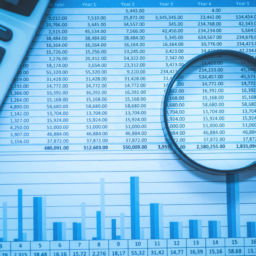
The ability to deter and solve crime using technology has long been the purview of science fiction movies like Minority Report and RoboCop. As Big Data becomes more available to law enforcement, however, predicting and preventing crime through technology is becoming a reality for police and security forces around the world.
Sounds like the stuff you see in sci-fi movies? Read on and learn how Big Data is being used to reduce and even prevent crime.
All this Information…
Big Data is the term used for vast amounts of data that are collected on a daily basis from all sorts of sources, from financial transactions and internet usage to surveillance footages and online shopping, and much, much more. The data itself is not especially useful until it is structured and interpreted. At that point, because of the volume of data available, it becomes valuable in identifying patterns and predicting trends. The use of Big Data to forecast future behaviour is known as “predictive analytics.”
Predicting Crime Before It Happens
Crime theory tells us that crimes are most likely to happen in areas where there are motivated perpetrators, suitable victims, and a lack of police presence. Big Data can help identify the areas where these three factors exist so police can be deployed to those locales before crime happens.
The Manchester, New Hampshire Police Department uses predictive analytics to identify crime “hot spots,” or areas where crime often occurs. The information could also tell police when crimes are likely to be committed in a specific area. Using this information, they can increase police presence in those places and at the times when crimes were shown to most likely occur. Hot spot maps could be updated and disseminated to the proper authorities in near real-time, allowing the sending of officers to critical areas at short notice, increasing the chances of being able to prevent a crime from occurring.
In the first ten weeks this system was deployed, Manchester saw 24% fewer robberies, 13% fewer burglaries, and 34% fewer thefts from motor vehicles. The department now reports a 60% accuracy rating in predicting crimes within 500 feet of where they occur.
Risk Modelling
Since crime is ever-present, identifying hot spots and increasing the police presence there will eventually result in the movement of criminals to other areas. Big Data can also be used to identify where those other areas are likely to be, helping police stay one step ahead of potential criminals.
Researchers at Rutgers University’s School of Criminal Justice used risk terrain modelling to identify the areas with a high historical concentration of criminal activity, to identify the factors that contributed to crime. They then identified areas with similar characteristics as locations to where crime would likely migrate in the future.
In Irvington, New Jersey researchers found that all shootings in 2007 occurred within a few blocks of clusters of clubs, liquor stores, bars, and fast food restaurants. They then studied the locations of shootings in 2008, finding that the locations may be different yet the incidents still occurred in the same type of high-risk areas. By identifying other areas that included these businesses associated with high risk, law enforcement could more accurately predict where crime would migrate. Through proper interpretation of these kinds of data, they were able to efficiently and effectively increase police presence in these high-risk areas to help prevent crime from happening.
Risk and Reward
Using Big Data in policing presents some risks that must be weighed against the rewards it provides. Attempting to predict future criminal activity is challenging. Countries will need to develop guidelines for how the information can be used without interfering or violating existing laws and regulations. It is still not a crime until an actual law is broken, no matter how “indicative” are the insights gained from effective use of big data. And there are privacy concerns that require addressing.
In China, for example, the government is using existing surveillance equipment in conjunction with data on the online behaviour, physical movement, and financial transactions of individuals. This information is being integrated with artificial intelligence and facial recognition to identify unusual behaviour which could indicate the potential for criminal behaviour or terrorist activity.
Many Western governments are likely to steer clear of this type of activity, at least until the technology has proven itself to be accurate. But a large-scale terrorist incident or military conflict could change public opinion about privacy concerns. The relationship between the risk to individual rights and the reward to society as a whole is something that will need to be determined. That being said, it’s clear that, as technological innovations in law enforcement show, Big Data’s potential in fighting crime cannot be understated.
The Future of Big Data and Fighting Crime
The use of Big Data in policing today is just the tip of the iceberg. As the technology becomes more refined and more widely available, law enforcement will find more use case applications for it, giving them the potential to combat crime in different fields, from crime in the streets to corporate fraud.
Perhaps the greatest advantage governments have, at least for the moment, is that Big Data and predictive analytics are not available to the common criminal. It just may prove to be the resource that finally allows law enforcement to get and stay ahead of the criminal element consistently.
Gleaning Insights from Data Is the Key
As in business, the usefulness of Big Data in law enforcement lies in the ability to properly and accurately interpret data. Through intelligent data platforms such as Latize Ulysses, both businesses and government agencies will have the ability to effectively derive key insights from Big Data which they can use to get closer to achieving their goals.



